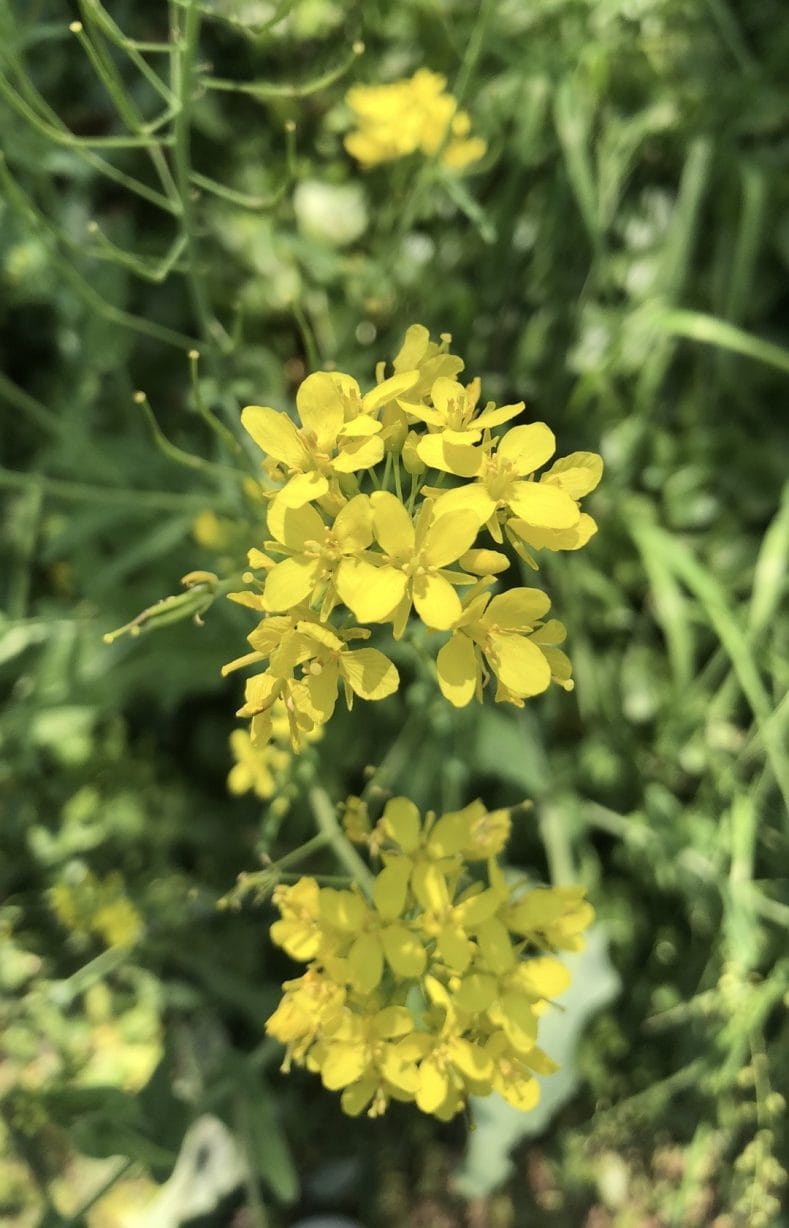
By Sofia Samatar
“The Friendly City” is a weekly column about walking in Harrisonburg that will run during 2024. Each week, your friendly correspondent, writer and teacher Sofia Samatar, will reflect on a walk in our city.
Let’s stray. Let’s wander through the Friendly City, toward some corner we have no reason to visit, on this sunny afternoon in the dogwood season, all the way across town, south to Purcell Park, even if there are other parks closer to home and we have no known acquaintances in this neighborhood. Absorb this place, this day: hot sun, cool breeze, the dark blue scalloped edge of the mountains rising against the sky over Port Republic Road, the beautiful smell of the trees, dogwoods in pink and white plumage all along the quiet streets near the park where other people live, where the aura of unknown lives colors the air.
A brick wall guarded by plaster eagles and lions. A blue-gray residence set far back on a velvet lawn, winking its arched windows. At the top of the rise, a baronial-looking place with huge white columns surveys the neighborhood with noble condescension. Only one house on this street shows any activity today, but as if to make up for the sleepy air of the other gardens, this one spot bustles with life. A determined-looking young man wheels a barrow back and forth over a yard covered with straw. An enormous mound of mulch occupies the foot of the driveway, on which several children are climbing and shrieking.
This mulch hill has attracted all the kids of the neighborhood. It must seem to them that a sort of alp has materialized overnight. Fully dressed or in pajamas, barefoot or shod, uniformly dusty, they cling to it with joy, trample over it, try to slide down it, climb it again and again. The discovery of the mysterious mountain electrifies the street. I think of Walter Benjamin, who wrote about children’s love for things abandoned by adults, especially “the detritus generated by building, gardening, housework, tailoring, or carpentry.” It’s not that children want to imitate grown-ups, Benjamin thought; rather, in the stuff strewn around adult workplaces, children “recognize the face that the world of things turns directly and solely to them.” Elsewhere he wrote: “Finds are to children what victories are to adults.”
I read his musings in a book by the philosopher Laura U. Marks, who extends his line of thought: “Simply,” she writes, “things have more to tell people than most people have time to hear . . .”
I walk down to the park, thinking of children and play, and of the wonderful gesture of Edward S. Purcell, who in 1954 sold his land to the city for one dollar on the condition that it would be used as a playground and public recreation area. The symbolic fee paid for the land that would become Purcell Park makes the exchange feel like a game, a gleeful transaction with play money. Strolling past the tennis courts, I glimpse the ash-brown turrets of the Kids Castle, where a few children are clambering about, dogs and caregivers waiting for them on the gravel.
A gap in a thicket catches my eye. Beyond it, in the whispering shade, a restored stretch of the creek swells and burbles. This is Blacks Run like I’ve never seen it before, broad and full, streaked with the shadows of branches, green with reflected foliage. Across town, where I live, I’ve never imagined the creek could hold so much water. As I walk beside it on a trail carpeted with glossy celandine, a duck starts from the shadows and flies a few yards downstream—no, not a duck—something larger, more elegant, a flicker of stormy blue. I creep along the water’s edge, following the bird as it watches me and rises to glide further down the creek, keeping its distance. Is it a heron? A cormorant? It draws me through a stretch of wildflowers that runs like an embroidered banner beside the creek: purple clusters of dame’s rocket and coral bells of buckeye on an emerald ground. When I lose sight of it, I stand among mustard blooms.
In the book I’m reading, Laura U. Marks draws a distinction between the material world and the simulated worlds of digital media. Interactive media like search engines and videogames evoke a feeling of infinite possibility, she writes, but what users encounter in them is “only quantitatively new.” To encounter something truly fresh, qualitatively new, you’re better off looking out the window than at your laptop screen, “because when you look out the window, your perception may bring something into being that never existed that way before.”
Look out your window. Wander into a place you’ve never been. I think of the children crawling sedately through the Kids Castle, and those other children up the street, stamping their naked feet in the mulch, crowing and dancing, beside themselves with delight. The Kids Castle is fun, but it doesn’t provoke that heady joy, the shock of seeing the face that the world of things turns directly and solely to children. To see that face, the children must worm their way into places they’re not supposed to be: garden sheds, kitchens, maybe the muddy brink of a creek.
And what of the grown-up people? The world of things may no longer turn its face to us, but by walking aimlessly—which might be our form of play—perhaps we can catch the glimmer of its eye. An echo of its voice. This spray of golden drops, which some have compared to the kingdom of heaven—what does it have to tell?












